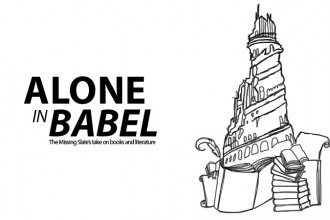The theme of replication plays a major role in Blade Runner 2049, not only in the centrality of its replicant characters—uncanny androids who have developed (or learned how to imitate) the human capacity for rebellion—but also in its status as a sequel to 1982’s influential sci-fi neo-noir. Ridley Scott’s Blade Runner envisioned a near future bathed in neon and obsessed with simulacra, smuggling themes of affectation and realness into a pulpy story of a grizzled “blade runner†tasked with eliminating troublesome replicants. Those themes might not be as profound in the original film as they’re often made out to be—the question of what it means to be human is posed in a broad, cursory manner, more of a plot device than a thematic exploration—but the film is a stylistic masterwork, offering a chaotic, cyber-dystopian world that has become entrenched in our pop-culture consciousness.
In Denis Villeneuve’s slow-burn sequel, we once again follow a blade runner working for the LAPD—in this case, Agent K, underplayed by Ryan Gosling with a blank expression meant to denote an enigmatic pseudo-humanity. K is one of a new model of replicant, the Nexus-9, more obedient and less prone to insurrection. His mission to “retire†the outdated and erratic Nexus-6 replicants leads to a shocking discovery that unsettles notions of what it means to be human or robot—providing, in one character’s words, a much-needed “miracle†to a world void of wonder.
Both Blade Runner and its sequel revolve around the murky identity of their protagonists, asking the audience to decide whether their eponymous blade runners—Officer Rick Deckard (Harrison Ford) in the first film, Agent K in the second—are human or replicant. The stakes feel higher in Blade Runner 2049, though, for both the world and its characters. Set 30 years after the original, Blade Runner 2049 envisions a California setting that has been ravaged by climate change. The weather is dreary and unpredictable, teeming with fog and an orange nuclear glow, snow occasionally falling at an indiscriminate time of year. A huge wall separates LA from the Pacific, which roars and rages, threatening to swallow everything. Greenery and vegetation are nowhere to be found, except in a few remaining greenhouses, the last vestiges of plant life. San Diego has been turned into a massive landfill, and much of the population appears crammed into a few remaining inhabited cities. The movie presents these images matter-of-factly, without feeling the need to comment on their apocalyptic nature. If the dreary neo-noir setting in the first film felt like fantasy, indebted to movies like Metropolis and THX-1138 (not to mention 1940s film noir), the world of the sequel feels like a tangible consequence of global warming—making the film’s other flights of futuristic fancy seem more believable.
While the physical world of Blade Runner 2049 is in a state of deterioration, its cybernetic world is no less compromised. The film takes place several decades after “the blackout,†a worldwide catastrophe that wiped out all computerized records. In the chaos that ensued, a mega-tycoon named Niander Wallace (Jared Leto)—blind and prone to uttering cryptic metaphors in a stilted monotone—bought out the previous film’s Tyrrell Corporation and introduced the new Nexus-9 replicants, able to coexist peacefully with humans. Blade runners like K are ordered to eliminate the last remaining archaic models, and it’s during one of these missions that he stumbles upon the discovery that could revolutionize the coexistence of humans and Nexus-9s—meaning the Bond-villainesque Wallace (complete with his shadowy lair and vicious lackeys) is also in pursuit. This would have been a ripe opportunity for Blade Runner 2049 to comment on the ambivalent role of massive tech corporations in today’s world—dictating our behavior to an alarming extent yet presenting themselves as harbingers of hope and togetherness with each iPhone update—but the movie is content to offer the Wallace Corporation as a shady, nefarious entity whose main purpose is to propel the plot forward.
Erasure and absence are integral to Blade Runner 2049. Not only has the digital world been wiped out, leading to a cyberpunk brave new world that has emerged from the apocalypse; the film also asks how “present†humans were in reality before the downfall. Is physical presence the only precondition for a living, thinking, feeling being? Is the intangible existence of a “soul†a prerequisite for humanity? (As K says at one point, maybe being born, as opposed to created, is the process that makes one truly human.) If an artificial being is supplanted with memories, does that somehow make it more complete, more conscientious? The film’s digital sheen and coldly beautiful compositions, teeming with negative space, reaffirm this duality: the grandiose images appear intentionally artificial, sapped of human vitality.
[quote]Blade Runner 2049 falls into the 21st-century pitfall that it purports to examine: the replacement of emotional sincerity with a simulacrum of human experience.[/quote]The theme of absence vs. presence is especially apparent in the character of Joi (Ana de Armas), a beautiful hologram with whom (with which?) K has fallen in love. A digital contraption on the ceiling of his cramped apartment projects her image—a fantasy of doting wife and feminine sexuality that both critiques and perpetuates a chauvinistic view of womanhood. Combined with a prostitute character that’s paid to entrap K, the skyscraper-tall holograms of naked women that prance around this seedy version of Los Angeles, and a replicant henchwoman not-so-subtly named Luv who has a habit of blankly weeping while she inflicts violence (played very well by Sylvia Hoeks, despite the dubious character), Blade Runner 2049 offers a highly suspect portrayal of women. In this future, females are either sexy digital fantasies or threatening figures of duplicity. The more powerful women are made semi-masculine, from Luv to the LAPD Lieutenant Joshi (Robin Wright), with her short Aryan hairdo and black bodysuits. The fact that Blade Runner 2049 seems aware of its own sexism—presenting its representations of women as further examples of men’s limited and fetishized view of womanhood—only makes its gender politics knottier and more hypocritical. It offers both an implicit critique and explicit example of misogyny.
This contradiction might also describe the movie’s examination of sincerity vs. affect: can one criticize a film about emptiness and artificiality for being empty and artificial? As with the original, Blade Runner 2049 primarily asks if artificial beings can be as emotionally sincere as humans (if not more so). And as in the original, the overall tone of icy despair and grim sentimentality is both an intentional commentary and a flaw in the film’s dramatic construction, an inability to balance a portrayal of inhumane apathy with the desired pathos. This becomes especially clear in Blade Runner 2049’s final act, which introduces a number of dramatic plot twists and maudlin coincidences meant to provide an emotional wallop, though they feel more like contrivances than sincere dramatic situations. Blade Runner 2049 should be both criticized and commended for its imitation of human emotion; it’s as though the film itself mimics its replicants’ propensity for attempting sincerity through ones and zeros.
By the time Harrison Ford shows up to recreate his role as Agent Deckard, Blade Runner 2049’s sequel credentials become apparent. Much like his reappearance as Han Solo in Star Wars: The Force Awakens, Ford’s performance fulfills the by-now clichéd duty of sequels to construct a mythological backstory and provide winking references to the original (also present in Blade Runner 2049 through Edward James Olmos and his origami figures, recognizable to fans of the 1982 film). Suffice it to say that modern sequels’ obsession with parenthood and progeny is becoming tiresome; Blade Runner 2049 does a great job at convincing the audience that its plot twists are meaningful and profound rather than dutiful recreations of recent franchises’ sequel templates. Admittedly, though, the rapport between Gosling and Ford—two completely different kinds of actor, one cerebral and reserved, one gruff and physical—is one of Blade Runner 2049’s most interesting elements.
Make no mistake: Blade Runner 2049 is one of the more compelling Hollywood sequels in recent memory, and its utter pessimism (at least initially) is entirely appropriate for America’s current sociopolitical state. But, just as the movie’s Nexus-9s replicate human behavior in order to obtain their personhood, Blade Runner 2049 aims for emotional impact but falls short, repeating the motions of earlier, better movies but too often achieving an air of artifice. (To use a recent example, Under the Skin does a far better job at examining what it means to be human, in a manner that is both more formally interesting and more genuinely affecting.) It’s as though Blade Runner 2049 falls into the 21st-century pitfall that it purports to examine: the replacement of emotional sincerity with a simulacrum of human experience. Both Blade Runner and its sequel look and sound amazing, and that visceral experience shouldn’t be dismissed. But to acclaim either film as a profound examination of the human condition is like embracing a beautiful hologram as a suitable replacement for the real.





